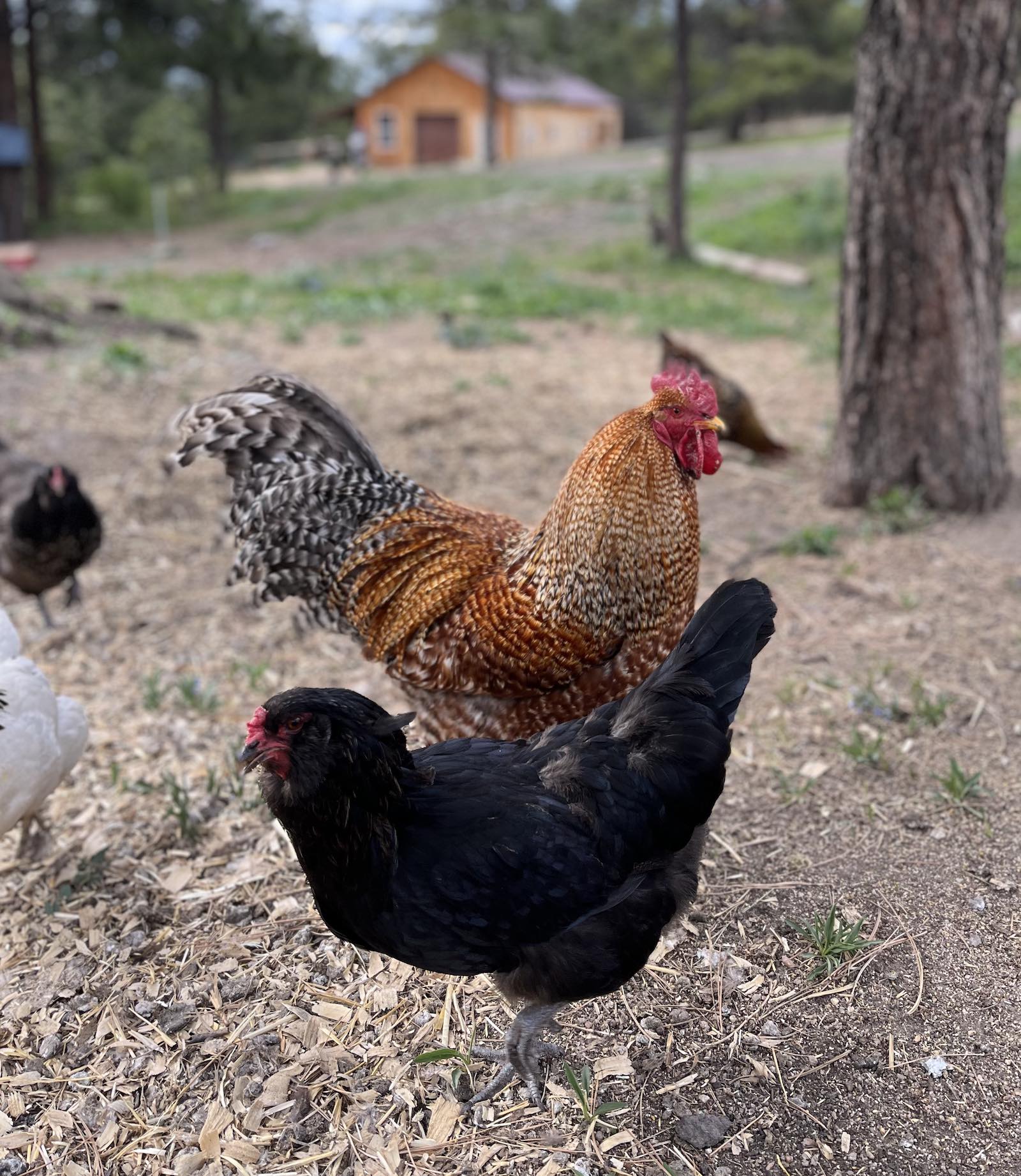
30 Jan Your Own Backyard Chickens
With the recent volatility of egg prices, and the ambiguity of food labeling, there’s never been a better time to start your own small scale egg production system than right now. If you’ve been toying with the thought of adding a little flock of happy hens to your backyard, we are here rooting for you!
Egg laying chickens are one of the easier opportunities (perhaps the easiest) if you’re hoping to raise more of your own animal-based foods. The direct benefit of eggs quickly outweighs the cost of feeding your hens. Not to mention the intangible benefit of getting to take care of and observe some really fun animals, and the reward of knowing exactly where your food came from and how the animals were treated to get your omelet on your plate.
Over the course of our time on our farmstead, we’ve raised over 100 egg layer chicks into maturity, incubated over a dozen ourselves, and had the privilege of gathering, consuming, and sharing thousands of eggs. Our hens are completely free range (they can go wherever they want on our farm), and we feed a corn-free, soy-free organic feed, along with produce and food scraps from our own table. They spend the summers soaking up the sun and dust bathing, catching bugs and picking at grass seeds. In the winters, they stay closer to the coop, and we supplement fresh produce scraps.
We have a half dozen roosters that protect about 40 hens, and we have enjoyed the chance to incubate some of our own fertilized eggs, though we usually order chickens from a hatchery.
Our flock is a barnyard mix of all sorts of breeds, and we are constantly delighted with our colorful egg basket. There is value to aesthetically pleasing things like a wire basket brimming with eggs of blue, green, brown, white and pink.
We regularly restock the nesting boxes with fresh straw to keep our eggs clean, so don’t often need to wash them — this way the egg bloom remains in tact and the eggs can happily sit out unrefrigerated for two weeks or more.
The most helpful technology we’ve found that has made our chicken keeping much easier was when we installed an automatic coop door. There are many different brands and types of these coop doors, but overall we found that the ability to set a time for the doors to open and close on their own has reduced the instances where we are in bed and suddenly remember we forgot to close the chickens up, thereby needing to get up, our coats and boots back on, and trudge down to the coop.
If you’re considering starting your own backyard flock, these are a few things we’d recommend keeping in mind:
A place to stay. Chickens do best with a right-sized coop and nesting boxes. The coop should be able to keep them out of wind and wet weather. It’s amazing how well they can handle cold. We don’t provide additional heat in our coop and the chickens have healthily made it through -20F nights. It helps to have a place for the chickens to roost in the coop. Coop size will depend on how many chickens you have (Google gives some recommendations here) and 1 nesting box per 4 hens.
Protection. Find out what kind of local predators you have. Backyard chickens are often lost to predators, and they come in many forms. Everything from skunks and raccoons to foxes, bobcats, coyotes, hawks, owls, neighborhood (or possibly your own) dogs — they all see your chickens as an easy and delicious treat. For certain predator types, you may need a run that both protects from digging and climbing.
We have all of the predators listed above and more, but we have made the decision to allow our chickens to free range, so we have Livestock Guardian Dogs to help alert us to predators. However we still do lose chickens, and that’s part of the sacrifice we recognized we had to make in order to allow our hens to free range.
Feed. If you’re starting with brooding chicks, be sure to have starter feed for them. There are many types of feed and supplements out there, find what works best for your health, your flock’s health, and your wallet.
HOAs and City/County Rules. One of the biggest hindrances to backyard flocks are HOAs or city and county rules. Find out what is allowed. Most places in urban and suburban areas don’t allow roosters, so be prepared with a plan to offload your roosters if you need to. If you are able to petition to change your HOA or local rules, go for it!
Support. Find your fellow chicken folk, whether it’s through a group on social media, or local meetups. Homesteading groups may also be a wealth of knowledge and help you along your journey.
We wish you all the best as you embark on your adventure with your backyard flock!
